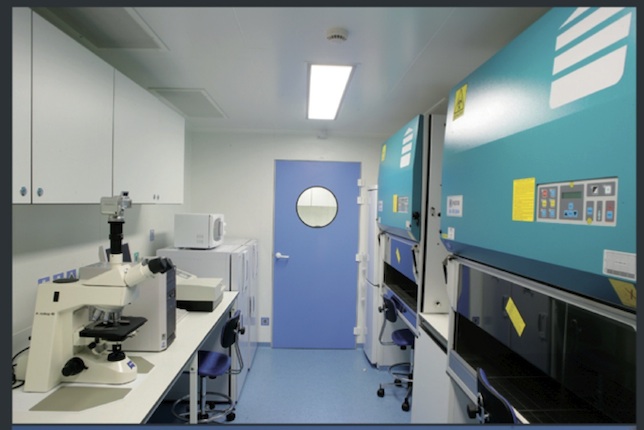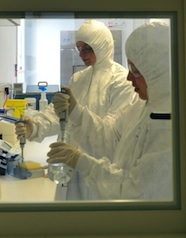A Physical Containment level 3 (PC3) facility enables health researchers to safely investigate live pathogens responsible for infectious diseases, at the cellular level.
PC3 indicates the second highest level of microorganism containment. The facility uses filters and negative pressure to prevent pathogens escaping.
Aiding drug development and diagnostics
Access to PC3 capability is important to allow researchers to investigate the target pathogen directly. Previously researchers tested a model using less dangerous bacteria, then the research had to be replicated on live pathogenic bacteria, in a PC3 facility elsewhere.
The PC3 facility enables research investigating:
- Adaptation of Mycobacterium tuberculosis to host tissues enabling the identification of novel drug targets
- Testing new inhibitors against Mycobacterium tuberculosis to identify new drug candidates
- Whole genome sequencing of drug-resistant Mycobacterium tuberculosis strains to develop new and rapid TB diagnostics
PC3 facility advice and information
Located at 720 Cumberland Street, Dunedin, the French-built, three room, bio-containment facility (weighing eight tonnes), was lifted onto the Microbiology building roof for installation in 2011.
The facility is available to researchers within, and external to, the University of Otago.
Contact Professor Greg Cook for advice and information:
greg.cook@otago.ac.nz
PC3 capability advances understanding of tuberculosis
Many infectious diseases are becoming drug resistant and antibiotics are losing effectiveness as a result. This makes new treatment approaches vitally important.
Tuberculosis (TB) kills approximately 1.3 million people per year and 10 million new cases are diagnosed each year. Of these 10 million new cases, 5% are multi-drug-resistant posing a serious threat for TB treatment.
No new drugs have been licensed for TB in 40 years and the recent reports of extensively drug-resistant (XDR), and totally drug-resistant TB strains threaten to return us to the pre-antibiotic era for this disease.
Read about Professor Greg Cook's work on TB:
Mycobacteria metabolism discovery may pave way for new TB drugs 22 July 2014, University of Otago media release

Looking inside one of the three rooms in the PC3 facility.

Dr Ildiko Pesci (right) and Assistant Research Fellow Marion Weimar work securely inside the PC3 facility.
PC3 facility news
- New lab excites Otago scientists Otago Daily Times website
- PC3 lab officially opened University of Otago Bulletin
- Researchers to use live human TB bacteria in new lab Otago Daily Times website
